#Lucien Carré
Text
——— a grand welcome to the vieux carré, RORY ANSON. with a city as diverse as this, there’s a new threat on almost every corner. being a WEREWOLF might provide some protection but their biggest strength may come from being loyal to THE INITATIVE. many see them as a SOLIDER which is why AND MY ARMS ARE TOUGH BUT THEY CAN BE BENT / THEY CAN BE BENT / AND I WANNA FIGHT BUT I CAN’T CONTEND seems to fit them perfectly. whispers say they’re from the FUTURE. can it all be believed? just keep an eye on them and see if their true colors shine through.

there's a tldr at the end for all interested parties.
cary anson was a werewolf raised amongst his pack who had settled in the bayou werewolf encampments. the last of his family, cary had been left in possession of the moonlight amulet. a gift from esther mikaelson to her lover, the stone was enchanted to prevent a werewolf shifting on the night of the full moon while in use. it was this very amulet that led to the attention of klaus mikaelson. the hybrid provided his descendants with protection, with cary offering aid in discovering the origin of the moonlight amulet. it wasn't before long that the bombings occurred, losing more and more of his family, it wasn't until the guerrera family made their move that cary finally fled new orleans, abandoning his pack in the process. eventually finding himself in the states, and it was there he met a woman named bradley. the two fell in love, eventually being wed. it was 2014 when their happy life came to a halt. lucien castle had been hunting for werewolves of the original 7 bloodlines, using the combination to use their venom for lethal strains and attempting to drive them to extinction. so cary and bradley ran like hell. it was some years later they encountered hayley marshall who convinced cary to donate some of his venom in exchange for a future favor of his choosing.
in was in 2024 that bradley and cary finally settled down once more in new orleans, enjoying the peace the city now provided. they finally felt safe enough to begin a family. thus, rory anson was born (the real protagonist of this intro, sorry cary). this safety lasted all of two years before war erupted back in new orleans, vampires hunting werewolves and the eventual death of hayley marshall. the anson family took the chaos at hayley marshall's funeral as a sign to leave new orleans once again on the run, only now with a toddler. now, alone again, they were hunted once more by vampires and actual hunters alike. so rory spent their formative years calling the forest home. often used to the sky over his head rather then any kind of building.
rory was 5 when his mother became a vampire. after so long in fear of them, cary felt unable to trust her and so in the light of day he ran, taking a confused child away from their mother. the grief of losing bradley, unable to bare the thought of her now being a vampire too, caught up to cary. putting their moonlight necklace around his child's neck, he started making more dangerous decisions. killing the vampires and hunters after them on night's of a full moon, and leaving a 6 year old child alone. it was one of these nights that an incident occurred. rory climbed tree and then fell from it. hard. with a broken arm, and a crying child, cary realized he was unequipped to be a parent any longer. traveling to mystic falls, and hoping that perhaps hope mikaelson would be willing to deliver on their mother's once promised favor. it was there that cary took, and left, rory. not even giving his son a proper goodbye (hello abandonment issues, this would be a long relationship).
it was only three days after cary's abandonment that rory tried to run away and find him. caught by hunters, rory would have been killed if not for the intervention of hope mikaelson. something of which created a bond between the two. the next four years were spent with hope being the only person that rory trusted, one of the people who understood the pain of staying at the boarding school when everyone else went home. the only person who ever came to visit rory, despite no longer being a student. hope was family, though rory never dared asked if they felt the same in fear of rejection of heartbreak that was so well acquainted.
it was midst the war that rory, alongside all other children among them, was sent to quor'toth. the next 18 years were spent in the hell dimension, with rory often finding the humans among them far more monstrous then any demons they encountered. eventually killing one in self defense. but with the amulet still in possession, rory was never forced to turn into a werewolf. upon rescue, only 18 days later in their home dimension. there was little time to digest much of anything before they were suddenly in 2012.
it took only nine days in the past for rory's first and only kill to catch up to them. it'd been the son of a member of the initiative, and in vengeance for their child rory was abducted. implanted with behavior-modification circuitry, a cerebral microchip that rendered rory unable to willingly harm or attempt to harm humans without causing debilitating pain, rory was tortured and experimented on. dubbed hostile 121, rory spent three weeks in captivity before being rescued by a former prisoner on a revenge kick.
tldr; rory is the son of cary (the last descendant of ansel). went to salvatore boarding school as a kid, went to the hell dimension, triggered wolfiness there, and then got kidnapped by the initiative and chipped.
#hellsmouth.intro#death mention tw#death tw#being hunted tw#torture tw#abduction tw#UGH THIS IS SO LONG#WTF#I HATE ME#my arms are tough; but they can be bent. / rory anson
3 notes
·
View notes
Photo

Harry Baur in Les Misérables (Raymond Bernard, 1934)
Cast: Harry Baur, Charles Vanel, Florelle, Josseline Gaël, Gaby Triquet, Jean Servais, Orane Demazis, Gilberte Savary, Charles Dullin, Marguerite Moreno, Émile Genevois, Robert Vidalin, Paul Azaïs, Max Dearly, Henry Krauss. Screenplay: Raymond Bernard, André Lang, based on a novel by Victor Hugo. Cinematography: Jules Kruger. Production design: Lucien Carré, Jean Perrier. Music: Arthur Honegger.
Harry Baur gives one of the great film performances in Les Misérables, beginning with a tour de force in the first installment, subtitled Tempest in a Skull, in which he plays not only the brutish convict Jean Valjean and his first assumed identity, the benevolent mayor of Montreuil-sur-Mer, M. Madeleine, but also the addle-brained Champmathieu, wrongly fingered as the fugitive Valjean. Baur's Valjean is not the dashing, younger heroic figure embodied by Fredric March in Richard Boleslawski's 1935 Hollywood version or Hugh Jackman in Tom Hooper's 2012 film of the musical. March and Jackman had to work hard to suggest Valjean's hardened convict past, but Baur looks the part. He cleans up nicely, though. Raymond Bernard's version is closer to the epic Victor Hugo novel than the later adaptations, which necessitates its miniseries length: a 281-minute total run time, divided into three films. Trilogies typically sag in the middle: In Peter Jackson's Lord of the Rings, for example, The Two Towers (2002) is weaker than The Fellowship of the Ring (2001) and The Return of the King (2003). But Bernard manages to give each part fairly equal heft, concentrating on Valjean's transformation in Tempest in a Skull, on the thwarted manipulations of the titular couple in The Thénardiers, and on the fight on the barricades in Freedom, Dear Freedom. This is not to say that there isn't some slackness within each installment: Bernard, like many directors who mastered their skills making silent films, doesn't seem fully at home with sound even yet; there are scenes in which the actors seem to be holding a pose a beat or two longer than necessary. And despite Arthur Honegger's distinguished score, Bernard allows some scenes that could use the "sweetening" of background music to go without it. In The Thénardiers, for example, the plot to ensnare Valjean and the ensuing fight scene could have used some tension-and-release music, but the score only begins, rather abruptly, when the lovers, Marius (Jean Servais) and Cosette (Josseline Gaël), meet. But as a totality, Les Misérables is a triumph, and apparently a little-known one, to judge by the fact that it doesn't come up as one of the top results in an IMDb search. Jules Kruger's cinematography gives an expressionist tilt to some of its scenes, and the production design, from the slummy haunts of the Thénardiers to the opulence of Gillenormand's mansion, is superb. But most of all it has Baur and a tremendous supporting cast, particularly Florelle* as a very touching Fantine, and Émile Genevois as a memorable Gavroche. Charles Vanel's Javert is not humanized sufficiently in the script, I think, so that his suicide comes as something of an anticlimax, but he gives it all the implacable menace the role allows him. But it's Baur who carries the film as impressively as he carries Servais's Marius through the sewers in the climax.
*Her full name was Odette Elisa Joséphine Marguerite Rousseau, and she was occasionally billed as Odette Florelle. It's too bad that today her screen name sounds like an air freshener.
3 notes
·
View notes
Text


"Au Revoir les Enfants" de Louis Malle (1987) - inspiré de l'histoire de Lucien Louis Bunel dit le Père Jacques de Jésus (1900-1945), prêtre résistant qui a caché trois enfants juifs Hans-Helmut Michel, Jacques Halpern et Maurice Schlosser, sous les identités de Bonnet, Dupré et Sabatier (morts déportés après dénonciation), dans son collège d'Avon pendant la Seconde Guerre Mondiale - avec Gaspard Manesse, Raphaël Fejtö, François Négret, Stanislas Carré de Malberg, Philippe Morier-Genoud, François Berléand, Francine Racette et Irène Jacob, septembre 2024.
#films#hommage#spirit#WWII#Malle#Bunel#JacquesDeJesus#DeJesus#Michel#Halpern#Schlosser#Bonnet#Dupre#Sabatier#Manesse#Fejto#Negret#CarreDeMalberg#MorierGenoud#Berleand#Racette#Jacob
0 notes
Video
youtube
Coperni Spring Summer 2024 - Forms of Attunement
By Sébastien Meyer & Arnaud Vaillant Film direction Alexandre Silberstein Film production Fantastic studio Styling Helena Tejedor Casting Samuel Ellis DM CASTING Creative Direction Kévin Tekinel & Charles Levai Head of design Charlotte Raymond Silberstein Music u.r.trax Hair Duffy with l’Oreal Paris Make up Fara Homidi with Fara Homidi Beauty Skincare Orveda Nails Marie Rosa Production La Mode en Images Press Lucien Pages Communication Sales Tomorrow LTD Ai-Pin hu.ma.ne Speaker Jacket transpa.rent Collaboration PUMA Location IRCAM, espace de projection Ircam sound director Pierre Carré
#youtube#coperni#ss24#sebastien meyer#arnaud vaillant#alexandre silberstein#helena tejedor#kevin tekinel#charles levai#fashion show#runway
0 notes
Photo


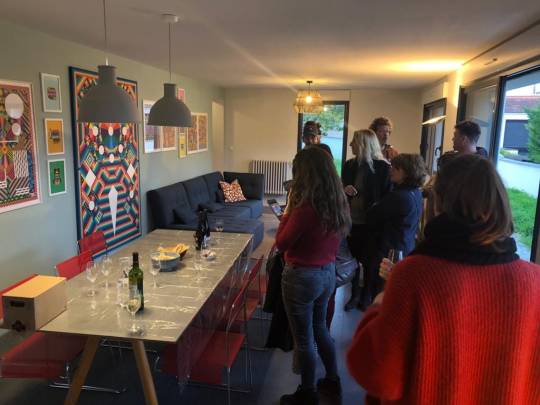

EALM #1
Vernissage au 17 Rue Lucien Nonorgues (Toulouse), le 31 mars 2023 à partir de 19h, puis l'exposition sera visible sur rendez-vous les week-ends suivants :
- 1er & 2 avril
- 15 & 16 avril
- 22 & 23 avril
- 13 & 14 mai
- 27 & 28 mai
GOOD VIBRATIONS - Arnaud Loumeau.
”I love the colorful clothes she wears And the way the sunlight plays upon her hair I hear the sound of a gentle word On the wind that lifts her perfume through the air… *”
Pour sa première Expo À La Maison, La Véranda invite Arnaud Loumeau : l'occasion de mêler ses travaux récents colorés sur emballage en carton et ses travaux plus anciens marqués par une obsession détendue pour la symétrie.
Good Vibrations des Beach Boys a été publiée en 45 tours en 1966. Pour cet enregistrement, Brian Wilson procède à un montage ingénieux en assemblant différentes parties instrumentales et cette complexité lui fait dire qu'il s'agit d'une « petite symphonie de poche ». 22 sessions, 4 studios différents et plusieurs mois de production sont nécessaires pour ce titre qui s'appuie sur un rythme captivant même si l'auditeur n'entend pas d'emblée toute la richesse de l’œuvre.
Des dizaines de milliers de carrés 5mm x 5mm, une dizaine de couleurs et des semaines de labeur... la démarche d'Arnaud Loumeau n'est pas si éloignée que ça de celle de Brian Wilson. Depuis plusieurs années, les dessins & peintures d’Arnaud Loumeau fonctionnent comme des leurres : cinétiques et symétriques, ils semblent vibrer mais en fait rien ne bouge, jamais. Cette pratique mécanique du dessin qui consiste à remplir de petits carrés avec une couleur lui permet de juxtaposer les formes et les couleurs qui, par leur proximité, entrent en vibration et créent l’illusion du mouvement. En cela, Arnaud Loumeau est un héritier direct des tenants de l'op-art qui pour rappel prend racine aussi bien dans les théories visuelles de Kandinsky que dans les propos de Josef Albers sur l'instabilité des couleurs.
Bien loin du pixel art, des mandalas, de l'art brut ou du psychédélisme dans lequel la paresse de certain·es l'enferme trop vite, Arnaud Loumeau figure une synthèse entre expressivité de la couleur et abstraction géométrique. On y croise à l'occasion un motif piqué à Nathalie du Pasquier comme un temple tout droit sorti d'un tableau de la Renaissance. A y regarder de près et dans la durée, il se révèle être un coloriste hors-pair pratiquant un art du retour vers le futur des plus singuliers et dont ses récents dessins sur cartons d'emballage témoignent avec force. Dans ces jeux de motifs c'est le contraste, la complémentarité, les résonances, les contrepoints qui sont à l'oeuvre, pour des images qui relèvent autant d'une spiritualité des formes que d'un art décoratif.
La couleur est la touche. L’œil est le marteau. L’âme est le piano aux cordes nombreuses.**
*1er couplet de Good Vibrations de The Beach Boys, paroles & musique de Brian Wilson, 1966
** Wassily Kandinsky, Du spirituel dans l'art et la peinture en particulier, 1911
Thomas Bernard & Christophe Brunella pour La Véranda
0 notes
Text

DUCHAMP, Marcel, et Tristan TZARA. Lettre de Marcel Duchamp à Tristan Tzara. [Alès], PAB, 1958
GRAVURE ORIGINALE SIGNÉE DE TRISTAN TZARA
ÉDITION ORIGINALE
In-12 carré (118 x 115 mm)
TIRAGE unique à 25 exemplaires, celui-ci numéroté 14, tous signés par Marcel Duchamp et PAB
ILLUSTRATION : 1 gravure originale numérotée et signée de Tristan Tzara en frontispice
PIÈCE JOINTE : 1 épreuve non signée de la gravure
RELIURE TRIPLÉE SIGNÉE DE PIERRE-LUCIEN MARTIN, datée 1983.
2 notes
·
View notes
Photo

Mary Garden (20 February 1874 – 3 January 1967) was a Scottish operatic soprano with a substantial career in France and America in the first third of the 20th century. Described as "the Sarah Bernhardt of opera", Garden was an exceptional actress as well as a talented singer. She was particularly admired for her nuanced performances which employed interesting uses of vocal color. Possessing a beautiful lyric voice that had a wide vocal range and considerable amount of flexibility, Garden first arose to success in Paris during the first decade of the 20th century. She became the leading soprano at the Opéra-Comique; notably portraying roles in several world premieres, including Mélisande in Claude Debussy's Pelléas et Mélisande (1902). She worked closely with Jules Massenet, in whose operas she excelled. Massenet notably wrote the title role in his opera Chérubin (1905) for her. In 1907, Oscar Hammerstein convinced Garden to join the Manhattan Opera House in New York where she became an immediate success. Impressed with her voice, Carré invited her to join the roster at the Opéra-Comique in 1900. Garden made her professional opera debut with the company on 10 April 1900 in the title role of Gustave Charpentier's Louise, which had received its world premiere only two months before. Although Garden had been preparing the role, her debut, at the eighth performance of the work, was unscheduled as she was a last minute replacement for Marthe Rioton who had become ill. After her debut, Garden quickly became one of the leading sopranos at the Opéra-Comique. In 1901 she starred in two world premieres, Marie in Lucien Lambert's La Marseillaise and Diane in Gabriel Pierné's La fille de Tabarin. That same year she sang the title role in Massenet's Thaïs at Aix-les-Bains, and sang both the title roles in Massenet's Manon and Messager's Madame Chrysanthème at the Opéra de Monte-Carlo; all under the coaching of Sanderson. In 1902, Claude Debussy selected her to play the female lead at the Opéra-Comique debut of his Pelléas et Mélisande. Garden's performances met with considerable critical acclaim. She also created a sensation as Salomé in the French version of Richard Strauss's opera of that name. Following the success of Pelléas et Mélisande, Garden periodically went to London to sing at the Royal Opera House, Covent Garden while still appearing in performances in Paris. At Covent Garden she sang Manon, Juliette in Charles Gounod's Roméo et Juliette, and Marguerite in Gounod's Faust during the 1902 and 1903 seasons. Garden. Her performances at the Opéra-Comique during this time included the title role in Massenet's Grisélidis (1902), Violetta in Giuseppe Verdi's La traviata (1903), the title role in the world premiere of Xavier Leroux's La reine Fiammette (1903), and the title role in Saint-Saëns's Hélène (1905). In 1905 she sang at the Opéra de Monte-Carlo in the world premiere of Massenet's Chérubin, a role which the composer wrote specifically for her. The following year she returned to the Opéra-Comique to sing Chrysis in the world premiere of Camille Erlanger's Aphrodite.Persuaded by Oscar Hammerstein to join his competition against the Metropolitan Opera, Garden quit her frequent Opéra-Comique engagements to join the Manhattan Opera House in New York City. She made her American debut in the Manhattan Opera House on 25 November 1907 in the title role in Thaïs, a role which fitted her personality and art like a glove. She further astounded American audiences with her uncanny portrayal of a young boy in Massenet's Le jongleur de Notre-Dame (1908) and in the United States premiere of Pelléas et Mélisande. In 1908 she returned to Paris to join the roster at the Opéra National de Paris. She sang there for one season, notably portraying Ophelia in Ambroise Thomas's Hamlet (1908) and the title part in Henry Février's Monna Vanna (1909) among other roles. She also sang the role of Marguerite in Gounod's Faust (1909) in Brussels.
3 notes
·
View notes
Photo










Beauty and the Beast (1946)
Country: France
Directed by: Jean Cocteau (& René Clément [uncredited])
Written by: Cocteau
Based on the fairy tale by: Jeanne-Marie Leprince de Beaumont
Cinematography by: Henri Alekan
Edited by: Claude Ibéria
Music by: Georges Auric
Production Design by: Christian Bérard & Lucien Carré
#Beauty and the Beast#Movie#France#Jean Cocteau#Lopert Films#Cowboy Pictures#Janus Films#The Criterion Collection#1940s#Drama#Fantasy#Romance#Surrealism
28 notes
·
View notes
Text

Vendredi 10 avril 2020.
J'essaie de me connecter au réseau de ma boîte sauf que je suis dans un magasin de bricolage et que soit le câble est trop court soit les tables bougent car sur des chariots élévateurs. Mes responsables ont l'air de bien prendre la chose et je me dis que je n'ai qu'à en faire autant.
C'est un peu ce que je fais pendant cette période. Je profite de chaque moment et je ne vois pas beaucoup plus loin que la journée et ça marche pas mal.
Autoroutes désertes. Retour à la maison. Jardin. Pissenlits partout.
Les figuiers commencent à mettre des feuilles. toutes les tulipes sont sorties. Parme, bordeau, jaune et blanches. Le muguet est prêt. Le jasmin d'hiver se développe de façon télescopique et il y a un nouveau chant d'oiseau dans l'arbre. Un pinson d'après Lucien Suel. Dessiné tout ça. Pas su comment faire l'arbre puis finalement en le faisant déborder entre les cases. Content du résultat. Sorti acheter de quoi faire un barbecue et un rosé. Croisé un jeune gars dans une Abarth au bruit glougloutant. 165 cv ! Sympa ! Merci !
La maison est agréable et ça sent l'été. Barbecue et rosé. Le premier de l'année, de la saison. Me sens en paix. Parait que le trafic aérien n'est pas près de reprendre.
L'oiseau, le chant de l'oiseau est cristallin, comme ce qu'on entend dans un sous-bois. Frais et émouvant.
Dessiné sur une chaise longue chauffée par le soleil. Ça fait du bien. Coupé des jacinthes. Mises dans le vase carré.
1 note
·
View note
Text
Beauty and the Beast [La belle et la bête]
Beauty and the Beast [La belle et la bête]
(France 1946)
“I ask of you a little of this childlike simplicity, and, to bring us luck, let me speak four truly magic words, childhood’s open sesame: Once upon a time…”
— Jean Cocteau
I’m familiar with Jean Cocteau. Somehow, I never saw one of his films until this sold out Sunday matinee screening of La belle et la bête, a story I know well and probably would have passed on but for the fact…
View On WordPress
#Actueel Film#Artfree#Beauty and the Beast#Chapelle Saint-Blaise des Simples#DisCina#disney#Gabrielle-Suzanne Barbot de Villeneuve#Henri Alekan#IFA#Internationale Filmallianz#Jean Cocteau#Jean Marais#Jeanne-Marie Leprince de Beaumont#Josette Day#La belle et la bête#Lopert Films#Lucien Carré#Marcel André#Michel Auclair#Mila Parély#Milly-la-Forêt#Nane Germon#Nederland NV#Pierre Cardin#Raoul Marco#René Moulaert#Wivefilm#WWII
0 notes
Photo

Saint-John Perse, Alexis Saint-Leger, dit
Éloges.
Paris, N.R.F., 1911.
In-12 (189 x 122 mm). Veau framboise, plats ornés chacun de six carrés mosaïqués en veau rose de deux tons différents, chaque carré présentant sur des pastilles ovales les 6 lettres du titre également mosaïquées, sur le second plat ces lettres sont inversées en effet miroir, dos lisse avec nom d’auteur doré, doublure et gardes de daim gris, tranches dorées, chemise à bandes et étui (P.L. Martin, 1978).
L'UN DES GRANDS LIVRES DE POÉSIE DU XXe SIÈCLE, DANS UNE RELIURE LETTRISTE DE PIERRE-LUCIEN MARTIN.
Édition originale.
Un des très rares exemplaires sur vergé de Hollande (tirage non mentionné).
Premier recueil poétique de l’auteur, paru sous le pseudonyme de "Saintleger Leger", qui n’apparaît que sur le feuillet de titre et non sur la couverture.
0 notes
Text

COSTER, Germaine de (1895-?). 27 bêtes pas si bêtes de Germaine de Coster présentées par Marcel Aymé. Paris: chez l'Artiste, 1950.
In-16 carré (140 x 131 mm). Illustré de 27 compositions de Germaine de Coster gravées sur bois de fil dont 15 en couleurs. Reliure signée G. de Coster et H. Dumas, maroquin vert lézard, plat supérieur orné de quatre oiseaux mosaïqués de maroquin bleu ciel, jaune, rose et noir dans un jeu de filets dorés se prolongeant au dos lisse, doublure et gardes de daim jaune paille, doubles gardes, tranches dorées, chemise et étui assortis (étui légèrement usé, dos passé). Provenance: Lucien Vendel (ex-libris, vente à Paris le 4 juin 1982, lot n° 80).
ÉDITION ORIGINALE de ces "courts poèmes en prose, dont chacun présente la confidence d'un animal" (Marcel Aymé). Tirage à 116 exemplaires, dont 16 hors commerce. Un des 60 premiers sur Japon ancien, celui-ci n° 5, avec UNE SUITE EN NOIR SUR JAPON PELURE DES 27 BOIS ET LA DÉCOMPOSITION D'UNE ILLUSTRATION TIRÉE SUR JAPON PELURE (5 bois, pour "La chouette").
On trouve insérées dans le volume: --Une lettre autographe de Germaine de Coster à M. et Mme Vendel (datée du 22 avril 1964) dans laquelle elle évoque un vernissage chez Blaizot et la présence de Rose Adler "trop vite partie"; --Une gravure titrée Ailes, signée au crayon "G. de Coster", et portant la mention autographe de l'artiste "Pour Monsieur et Madame Vendel". Germaine de Coster réalisa quatre reliures pour cet ouvrage. Celle-ci fut exposée en 1953 à l'exposition de la Reliure originale. TRÈS JOLI EXEMPLAIRE. De Coster-Dumas Reliures n° 70.
成交價EUR 4,625 (2008)
https://www.christies.com/zh/lot/lot-5152668
0 notes
Text

François Négret et Stanislas Carré de Malberg dans "Au Revoir les Enfants" de Louis Malle (1987) - inspiré de l'histoire de Lucien Louis Bunel dit le Père Jacques de Jésus (1900-1945), prêtre résistant qui a caché trois enfants juifs Hans-Helmut Michel, Jacques Halpern et Maurice Schlosser, sous les identités de Bonnet, Dupré et Sabatier (morts déportés après dénonciation), dans son collège d'Avon pendant la Seconde Guerre Mondiale - septembre 2024.
#films#Negret#CarreDeMalberg#Malle#Bunel#JacquesDeJesus#DeJesus#Michel#Halpern#Schlosser#Bonnet#Dupre#Sabatier
0 notes
Text
READING DE NACHT READING 2017
my favourite books of the year
my overall favourite book of the year:

david keenan “this is memorial device” [faber & faber] (2017)
POST-CYBERPUNKSTOMPF:

01 nick harkaway "gnomon" (2017)
02 kim stanley robinson "new york 2140" (2017)
03 m john harrison "you should come with me" (2017)
04 gardner dozois (ed) "the year's best science fiction: thirty-fourth annual collection" (2017)
05 james morrow "the asylum of dr. caligari" (2017)

06 annalee newitz "autonomous" (2017)
07 cory doctorow "walkaway" (2017)
08 dave hutchinson "acadia" (2017)
+ dave hutchinson "slow companions" (2017)
09 ed finn (ed) visions, ventures, escape velocities: a collection of space futures" (2017)
10 bryan thomas schmidt (ed) "infinite stars" (2017)
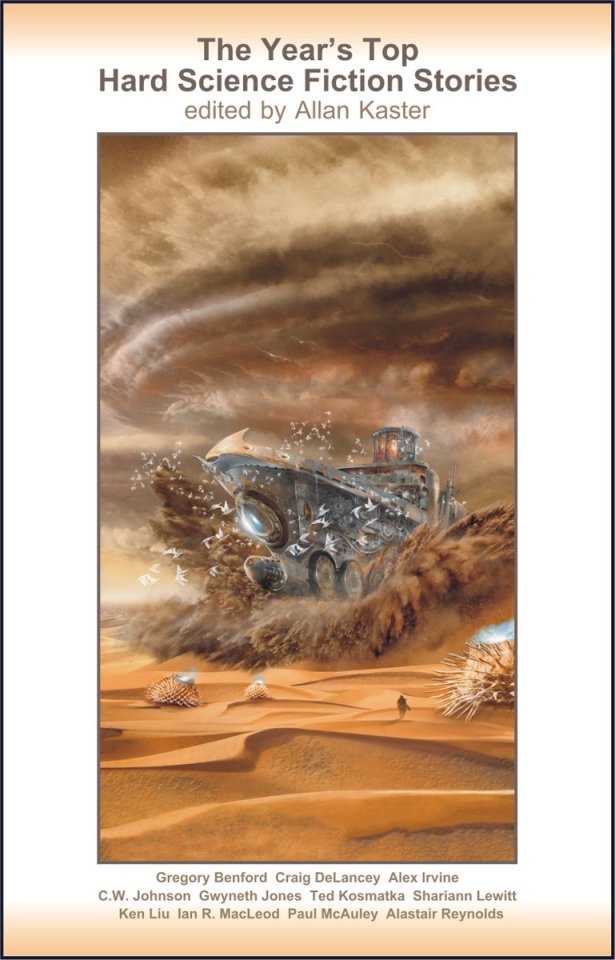
11 allan kaster "the year's top hard science fiction stories" (2017)
12 nina allen "the rift" (2017)
13 charles stross "the delirium brief" (2017)
14 simon morden "at the speed of light" (2017)
15 ada palmer "seven surrenders" (2017) & "the will to battle" (2017)
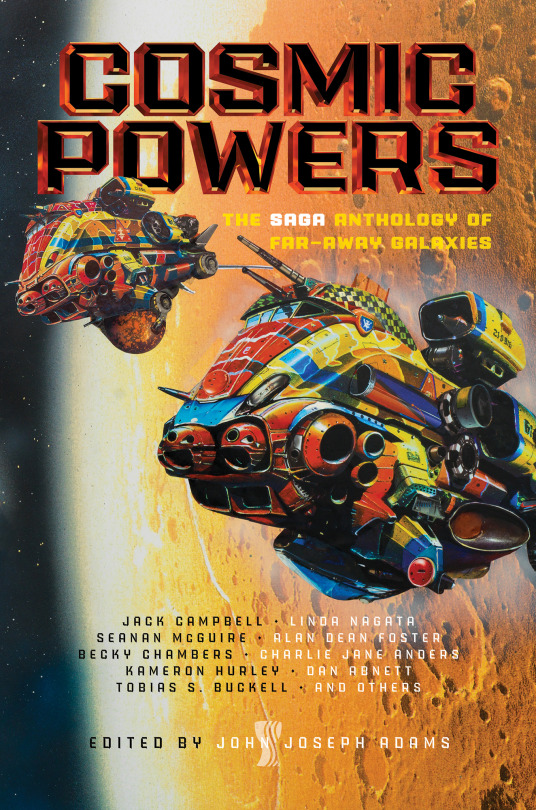
16 yoon ha lee "raven stratagem" (2017)
17 john joseph adams (ed) "cosmic powers" (2017)
18 mur lafferty "six wakes" (2017)
19 taiyo fujii "orbital cloud" (2017)
20 andrew bannister "creation machine" (2016)
+ andrew bannister "iron gods" (2017)
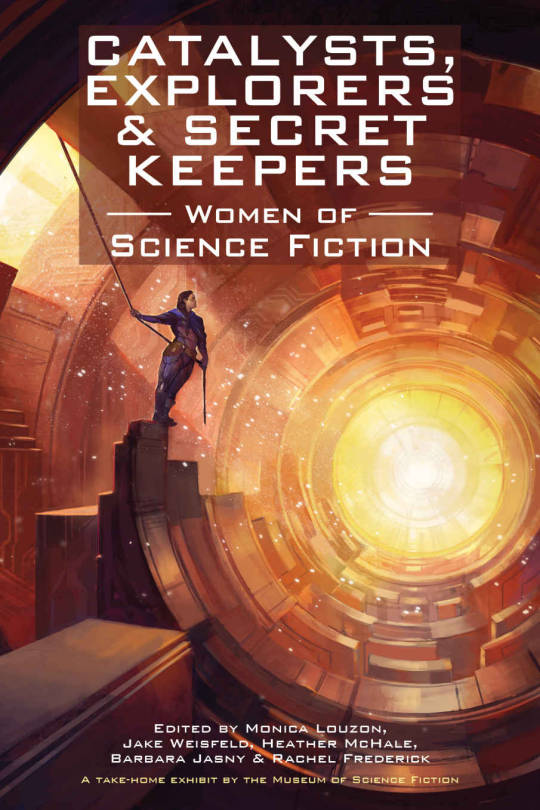
21 gareth l powell "entropic angel & other stories" (2017)
22 ann leckie "provenance" (2017)
23 monica louzon (ed) "catalysts, explorers & secret keepers: women of sf"
24 ian mconald "wolf moon" (2017)
25 neal stephenson & nicole galland "the rise & fall of d.o.d.o." (2017)

26 adam roberts "the real-town murders" (2017)
27 tim pratt "the wrong stars" (2017)
28 jim c. hines "terminal alliance" (2017)
29 charles stross "the empire games" (2017)
30 james s.a. corey "persepolis rising" (2017)
+ james s.a. corey "strange dogs" (2017)

31 allen steele "avengers of the moon (captain future)" (2017)
32 neal asher "infinity engine [transformation III]" (2017)
33 jason m. hough "injection burn" (2017)
+ jason m. hough "escape velocity" (2017)
34 donna scott (ed) "best of british science fiction 2016"/una mccormack "star of the sea" (2016)
35 david marusek "upon this rock"/john scalzi "collapsing empire" (2017)
& a couple of re-readings:
richard k. morgan "takeshi kovacs trilogy" in view of the coming netflix series
and colin harvey "damage time" (2010) ... no further reason needed!
STOMPF KLASSIK:
01 matthew mcintosh "the mystery.doc" (2017)

02 sébastien roger "les désordres du monde. walter benjamin à port-bou" (2017)
03 laurent binet "hhhh" (2012)
04 + laurent binet "the 7th function of language" (2017)
05 jean echenoz "special envoy" (2017)
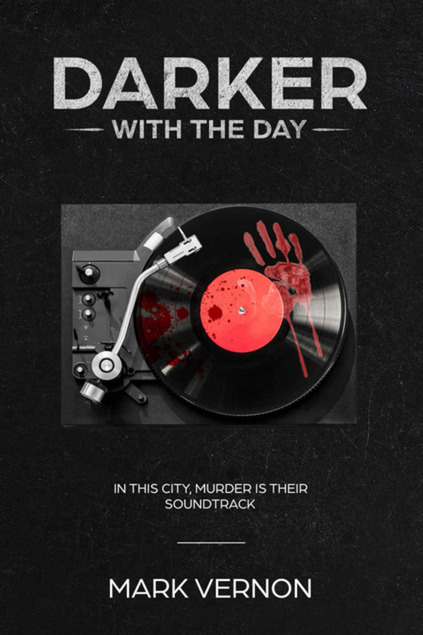
06 paul stanbridge "forbidden line" (2016)
07 ryu murakami "tokyo decadence (2016)
08 aifric campbell "the semantics of murder" (2008)
09 mark vernon "darker with the day" (2017)
10 magnus mills "the forensic records society" (2017)
GEDÄCHTNISSTOMPF:

01 mckenzie wark "general intellects: 25 thinkers for the 21st century" (2017)
02 claude lefort "wat is politiek?" (2016)
03 ger groot & sam ijsseling "dankbaar en aandachtig" (2013)
04 martin heidegger "beiträge zur philosophie (vom ereignis)" (2003)
05 hannah arendt "totalitarisme" (2014)
06 daniel birnbaum & kim west "life on sirius: the situationist international & the exhibition of art" (2016)
07 ger groot "de geest is uit de fles" (2017)
08 sean gaston "the impossible mourning of jacques derrida" (2006)
09 bas heijne "onbehagen: nieuw licht op de beschaafde mens" (2016)
10 giorgio colli "ecrits sur nietzsche" (2017)

11 frédéric neyrat "échapper à l'horreur" (2017)
12 slavoj zizek "against the double blackmail, refugees, terror & other troubles with the neighbours" (2017)
13 henning mankell "quicksand" (2016)
14 jacques rancière "en quel temps vivons-nous? conversations avec eric hazan" (2017)
15 alain badiou "je vous sais si nombreux... " (2017)
16 alain badou & jean-luc nancy "la tradition allemande dans la philosophie" (2017)
17 tom mccarthy "typewriters bombs jellyfish [essays]" (2017)
18 valeria luiselli "tell me how it ends: an essay in 40 questions" (2017)
19 fredric jameson "raymond chandler: the detections of totality" (2016)
20 umberto eco "chronicles of a liquid society" (2017)

POLARSTOMPF:
01 chris petit "pale horse riding" (2017)
+ chris petit "the butchers of berlin" (2016)
+ chris petit "the human pool" (2002)
+ chris petit "the psalm killer" (1996)
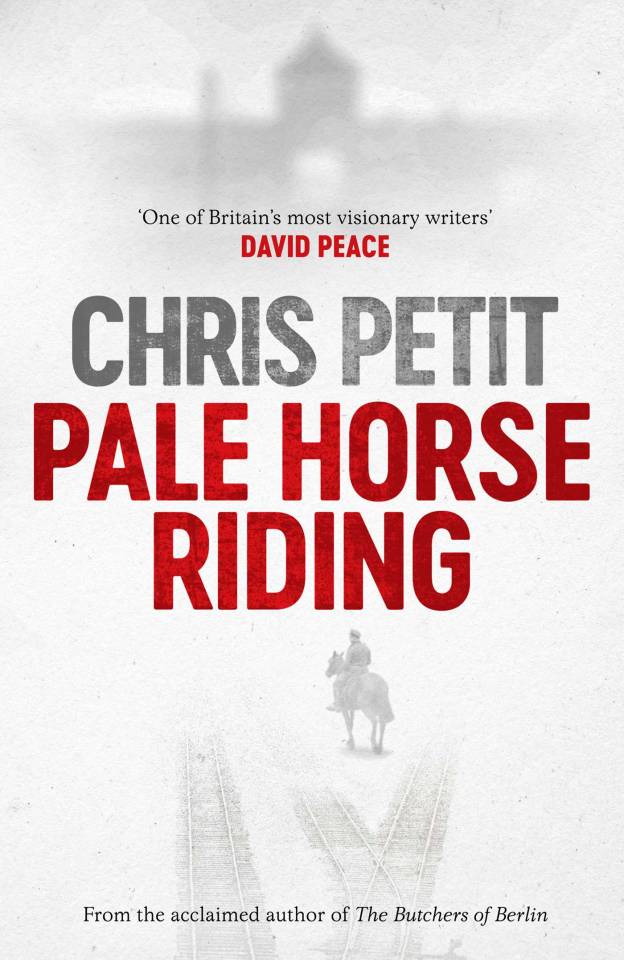
02 john le carré "a legacy of spies" (2017)
03 david hewson "sleep baby sleep" (2017)
04 mick herron "slow horses" (2010)
+ mick herron "dead lions" (2013)
+ mick herron "the list" (2015)
+ mick herron "real tigers" (2016)
+ mick herron "spook street" (2017)
05 jussi adler-olsen "the scarred woman" (2017)
06 jo nesbo "the thirst" (2017)
07 ben fergusson "the spring of kasper meier" (2014)
08 e.o. chirovici "the book of mirrors" (2017)
09 toni coppers "de zaak magritte" (2017)
10 james r. tuck "mama tried (crime fiction inspired by outlaw country music)" (2016)

YOUNGADULTSTOMPF:
01 philip pullman "la belle sauvage" (2017)
PLATTERSTOMPF:
01 cosey fanni tutti "art sex music" (2017)
02 david keenan "this is memorial device" (2017)
03 joanne demers "drone and apocalypse" (2015)
04 + joanne demers "listening through the noise" (2010)
05 robert barry "the music of the future" (2017)

06 richard cabut & andrew gallix (eds) "punk is dead: modernity killed every night" (2017)
07 butt gavin, kodwo eshun, & mark fisher (eds) "post punk then and now" (2016)"
08 sandra garrido "why are we attracted to sad music" (2016)
09 tomas serrien "klank: een filsofie van de muzikale ervaring" (2017)
10 marlies de munck "waarom chopin de regen niet wilde horen" (2017)

11 daniel warner "live wires" (2017)
12 will carruthers "playing the bass with three left hands" (2016)
13 steve hanley "the big midweek-life inside the fall (2016)
14 tex perkins "tex" (2017)
15 mark lanegan "i am the wolf" (2017)
17 simon reynolds "shock & awe" (2016)
18 andrew o'neill "a history of heavy metal" (2017)
19 bryan ray turcotte "the fucked up reader" (2007)
10 bob batchelor (ed) "literary cash" (2017)
20 simon webb "a 1970s teenager. from bell-bottoms to disco dancing" (2013)
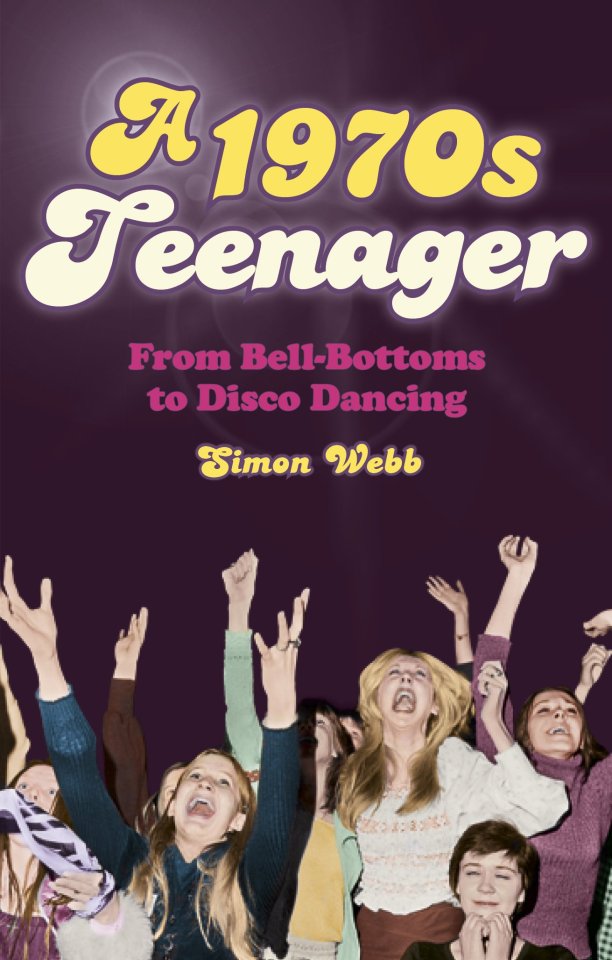
both bell-bottoms and disco dancing can be had @ muntpunt !
POESISSTOMPF:

01 jonty tiplady "zam bonk dip" (2010)
02 murray lachlan young "how freakin' zeitgeist are you?" (2017)

BILDERSTOMPF:
01 peter-andré bloch "sils-maria - "l'île bienheureuse" pour nietzsche" (2017)

02 willem vanhuyse "atlas van de imaginaire verklaringen: het complete handboek vor de 'patafysicus'" (2017)
03 reinhard kleist "nick cave: mercy on me" (2017)
04 william gibson "archangel (a graphic novel)" (2017)
05 a. uderzo, didier conrad & jean-yves ferri "astérix et la transitalique" (2017)
WISSENSCHAFTSTOMPF:
01 thibault damour & mathieu burniat "mysteries of the quantum universe" (2017)
02 brian cox & jeff forshaw "universal: a journey through the cosmos" (2017)
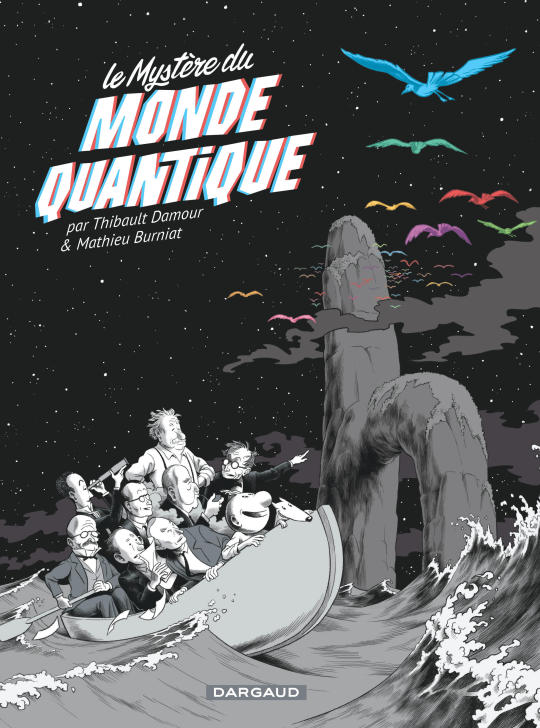
HUMOURSTOMPF:
01 james acaster "james acaster's classic scrapes" (2017)

02 chris wade “the story of derek and clive” (2017)
CYCLOSTOMPF:
01 frederik bakelandt "grinta! de bergen: 10 legendarsche wielercols" (2017)

02 lucien van impe & filip osselaer "de dag dat ik de tour verloor" (2017)
03 jonas heyerick & jelle vermeersch "bahamontes #17-#20" (2017)
04 frank strack "the hardmen: legends of the cycling gods" (2017)
05 matthias m. r. declercq "de val" (2017)

… tsundoku !
may your home be safe from tigers,
leroy,
x
HNY!
the TBR pile grew with...

lászló krasznahorkai "the world goes on" (2017)
samanta schweblin "fever dream" (2017)
peter mark, peter helman & penny snyder (eds) "the mountains in art history" (2017)

alvin lucier (ed) "eight lectures on experimental music" (2017)
rhian e jones & eli davies "under my thumb: songs that hate women and the women who love them" (2017)
arne dahl "watching you" (2017)
philip kerr "prussian blue" (2017)
antti tuomainen "the man who died" (2017)
jon michelet "the frozen women" (2017)
nicolás obregón "blue light yokohama" (2017)

alex lamb "exodus" (2017)
c robert cargill "sea of rust" (2017)
chris brookmyre "places in the darkness" (2017)
d nolan clark "forgotten worlds" & "forbidden suns" (2017)
dan moren "the caledonian gambit" (2017)
elizabeth moon "cold welcome" (2017)
ferrett steinmetz "the uploaded" (2017)
greg egan "dichronauts" (2017)
ian whates "the ion raider" (2017)
jaine fenn "the martian job" (2017)
jamie sawyer "pariah" (2017)
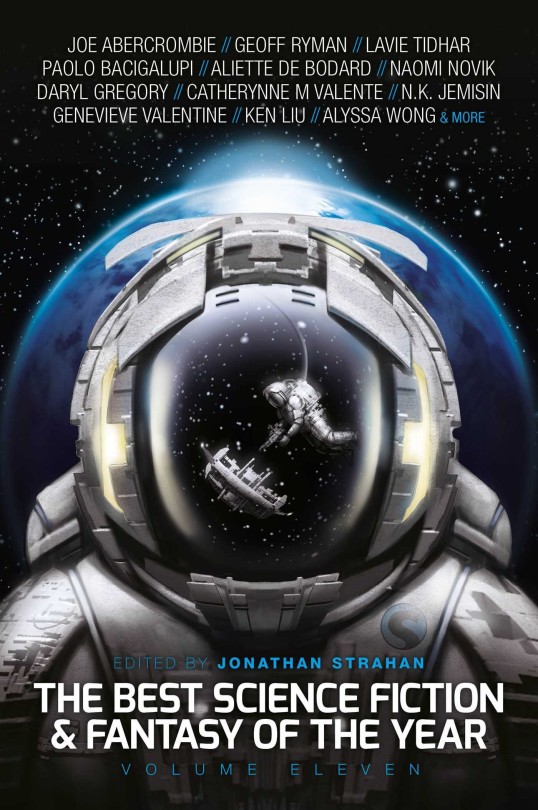
jeff noon "a man of shadows" (2017)
joe m mcdermott "the fortress at the end of time" (2017)
joe zieja "communication failure" (2017)
john kessel "the moon and the other" (2017)
john meaney "destructor function" (2017)
jonathan strahan (ed) "best sf &f of the year vol 11" & "infinity wars" (2017)
kameron hurley "the stars are legion" (2017)
kay kenyon "at the table of wolves" (2017)
malka older "null states" (2017)
marina j. lostetter "noumenon" (2017)

martha wells "all systems red" (2017)
neil clark (ed) "galactic empires" & "more human than human" (2017)
paul mcauley "austral" (2017)
r.e. stearns "barbary station" (2017)
robert kroese "last iota" (2017)
sage walker "the man in a tree" (2017)
stephen baxter "obelisk" (2017)
+ stephen baxter "the massacre of mankind" (2017)
sulari gentill "crossing the lines" (2017)
the justified ancients of mu mu “2023 a trilogy” (2017)
wendy n. wagner "an oath of dogs" (2017)

21 notes
·
View notes
Text
OSER UN SUPPLÉMENT D’ARCHITECTURE

Benoît Hermet / Cargo © Javier Callejas
Francis Marchionini et Olivier Oslislo ont créé l’agence MORE architecture à Bordeaux. Défendant une ouverture d’esprit, ils cherchent à renouveler le rapport à la ville. Rencontre à l’occasion de la livraison récente d’un programme de logements aux Bassins à flot.
« Nous expérimentons beaucoup dans nos réalisations, en cherchant ce supplément à donner, cette générosité non programmée dans un projet. » Francis Marchionini et Olivier Oslislo travaillent ensemble depuis quinze ans et ont fondé en 2010 leur SARL, l’agence MORE. Diplômés de l’école d’architecture de Bordeaux, ils intègrent également l’urbanisme à leurs compétences. « Expérimenter, c’est prendre le temps d’envisager toutes les solutions possibles », poursuit Francis Marchionini. En choisissant le qualificatif de « MORE », ils ont voulu exprimer cette ouverture d’esprit. « Les agences d’architecture doivent se transformer pour survivre et exister, puiser dans l’urbanisme, le paysage pour être en résonance avec le monde actuel. » La diversité de leurs réalisations témoigne de leur curiosité : un bâtiment tertiaire à La Rochelle (avec l’agence Poggi architecture), un skatepark dans l’est de la France, le futur parking « paysage » du Grand Parc à Bordeaux, un pôle d’animation sociale à Bassens ou encore plusieurs ensembles de logements collectifs…

© Yann Rabanier
Un CARGO aux Bassins à flot
L’agence a livré l’automne dernier un programme de 36 appartements réalisé pour l’opérateur ICADE dans le quartier des Bassins à flot. Baptisé CARGO, ce bâtiment aux façades anthracite est qualifié de « tellurique » par ses architectes, entre minéralité urbaine et référence à l’ancienne activité portuaire, auxquelles s’ajoute l’influence de la Base sous-marine non loin.
L’immeuble se positionne à la jonction de la rue Bourbon, parallèle au cours Lucien-Faure, et d’une sente intérieure, ces cheminements piétons inscrits dans le plan général des Bassins à flot conçu par Nicolas Michelin. Cet emplacement posait d’emblée un sujet classique d’architecture : le travail de l’angle. Ici, Francis et Olivier ont abordé le projet comme le ferait un sculpteur moderne, en découpant la matière. Leur bâtiment « carapace » s’étage en degrés, dessinant une « topographie » de terrasses, avec un côté en coeur d’îlot. Les façades en béton banché aux légères variations de teintes rappellent les briques d’un grand LEGO®.

White Clouds © Javier Callejas
Dans ce quartier dense, qui est aussi l’évolution actuelle de Bordeaux, Francis et Olivier traitent la relation du dedans et du dehors selon un principe de loggias. « Cela nous semblait être la meilleure réponse pour des espaces extérieurs généreux tout en préservant l’intimité des habitants. » Les façades s’animent du rythme des ouvertures carrées qui offrent des points de vue sur la ville et le quartier. Les architectes osent parfois de grandes baies pour des pièces plus privées comme une chambre à coucher. Francis évoque un séjour personnel en Scandinavie où les habitats, souvent dépourvus de volets, laissent passer la lumière. Les appartements d’angle ou traversants apportent de la fluidité aux espaces intérieurs, les menuiseries extérieures sont en bois, soulignées de cadres fins, une attention aux détails dans un budget optimisé. Contrairement à d’autres immeubles des Bassins à flot, dont les sommets triangulaires rappellent les hangars industriels, les toitures de CARGO sont planes, tantôt en terrasses ou végétalisées, toujours selon les principes du plan-guide du secteur. Quand on évoque les critiques que suscitent parfois l’esthétique et la densité de ce nouveau quartier, les architectes rappellent les nombreuses réunions à la Maison du Projet des Bassins à flot où ont été discutées leurs propositions. « La densité urbaine a aussi pour contrepoint la vaste plaque portuaire entourant les bassins, qui doit constituer à terme un formidable espace public. »

White Clouds © Javier Callejas
Des nuages blancs primés à Saintes
Toujours dans le domaine de l’habitat collectif, MORE architecture avait livré en 2016 un ensemble de logements sociaux baptisé White Clouds (avec l’agence d’Emmanuelle Poggi). Édifié à Saintes, en Charente-Maritime, ce programme est constitué de grands modules blancs aux orientations multiples, sans hiérarchie traditionnelle des façades. « Là encore, nous avons voulu transcender ce qu’est le logement aujourd’hui et être le plus généreux possible. » La structure en blocs décalés est augmentée d’espaces extérieurs suspendus (4 par appartement) que les habitants utilisent librement. Le projet a surpris… pour être finalement le seul lauréat français du concours européen des Best Architects 18 Awards ! « En étant dans l’architecture, l’urbanisme et le paysage contemporain, nous voulons essayer de renouveler le sujet de la ville… » MORE architecture ? On en redemande !
www.more-architecture.fr/
instagram @m.o.r.e.architecture
facebook @MORE Architecture
3 notes
·
View notes
Text
From Campari to Kahlúa, New Uses for Old Liqueurs

Building a decent selection of base spirits lays a solid foundation for any home bar. But it’s the careful addition of modifiers and liqueurs that unlocks your bar’s true potential. It’s impossible to mix a Negroni, for example, without sweet vermouth and the Italian bitter liqueur Campari. And good luck shaking up an Espresso Martini without a coffee-based liqueur such as Kahlúa.
While liqueurs like Campari and Kahlúa may seem linked to specific cocktails, don’t write them off as one-trick ponies. Neither should you reach for Aperol only during aperitivo hour or open the orange liqueur when it’s time to mix Margs. With a little insider knowledge, there’s a world of opportunities to explore, from forgotten gems to lesser-known “modern classics.”
To find out how to get more miles out of the liqueurs on your bar cart, we tapped a small pool of bartenders with a wealth of experience.
Among them was Brian Miller, a self-styled “tropicalogist” whose resume is littered with New York cocktail institutions such as Pouring Ribbons, Pegu Club, and Death & Co. Also weighing in with sage advice from the Empire State was Lucinda Sterling, who came up at Milk & Honey under the late Sasha Petraske, and now works as a bartender and co-owner of Middle Branch and Seaborne. Completing the trio was Los Angeles-based Tyson Buhler, national beverage director at Death & Co.
Aperol
Likely the liqueur that’s most famously handcuffed to one specific drink, the Aperol Spritz, it is a perfect example of a criminally underutilized bottle. Instead of adding Prosecco and soda, try it in the Mexican-inspired Oaxaca Soul. An original creation from Phillip Childers of Sterling’s Middle Branch, this shaken cocktail combines 1 ½ ounces tequila, ½ ounce Aperol, ½ ounce agave syrup, and ¾ ounce lemon juice. Strain over ice and garnish with an orange slice and mezcal float.
For a better-known modern classic, Sterling suggests the Intro to Aperol, created by Audrey Saunders at New York’s Pegu Club. Bittersweet, with a citrus twang, this summery shaken cocktail blends 2 ounces of Aperol with 1 ounce gin, ¾ ounce of lemon juice, and a dash of Angostura bitters. Alternatively, there’s the Paper Plane, a Sam Ross creation from his time at Milk & Honey. Requiring an added, esoteric Italian ingredient, this well-balanced, equal-parts cocktail shakes ¾ ounce each Aperol, bourbon, lemon juice, and Amaro Nonino. (It’s worth picking up a bottle of Amaro Nonino for this drink alone.)
Baileys
Newly minted home bartenders might turn their noses up at Baileys, but two of our bartenders revealed a soft spot for the velvet- smooth liqueur. Miller enjoys a splash in hot coffee in lieu of cream and says, “I’ve never had a bad Baileys before. The shelf life is probably the same as a Twinkie.” For those who feel the urge to pull out the shaker, all roads lead to the Mudslide. The grownup milkshake sees 1 ounce each of vodka, coffee liqueur (more on this soon), and Baileys, shaken with 1½ ounces heavy cream.
Another (in)famous preparation is the Blow Job shot, a regrettably named ‘90s creation that floats ⅕ ounce of the Irish cream on top of a ½ ounce shot of Amaretto. A healthy topping of whipped cream is added as garnish for good measure. The Baby Guinness, a more enjoyable preparation, ditches the cream and switches in coffee liqueur for the Amaretto. It’s a picture-perfect pairing alongside a pint of the real thing. And before we leave the Emerald Isle, Sterling offers one last Baileys tip: Mix equal parts with Irish whiskey and lots of ice. “You definitely want to water it down and make it last that little longer,” she says.
Campari
Once you’ve conquered the Negroni, Buhler says the drink’s “siblings” are the next logical step for exploring Campari cocktails. A few simple tweaks to the equal parts gin, Campari, and sweet vermouth recipe offer a range of options.
Remove the gin to enjoy a bittersweet Milano-Torino. Add a splash of soda to that drink and it becomes the Americano. “As long as you’ve got a couple bottles of vermouth in the fridge, the Boulevardier and Old Pal are also really easy spins,” Buhler says. The former subs in bourbon for Negroni’s gin, while the latter replaces it with rye and switches out the sweet vermouth for dry.
For a departure from Negroni’s well-worn flavor profile, Buhler recommends more recent creations. “There’s a really great drink that came out of Milk & Honey years ago from Mickey McIlroy called the Rome With a View,” he says. A citrusy riff on the Americano, this cocktail shakes 1 ounce each Campari, dry vermouth, and fresh lime juice, with ¾ ounce simple syrup. Finish with a splash of soda water and an orange wheel.
“There’s another one that I love from the ‘90s called the Jasmine,” Buhler says. Created by Paul Harrington at the Townhouse Bar & Grill in Emeryville, Calif., this drink could be mistaken for a Cosmopolitan with its powdery pink appearance. Instead, it’s a more nuanced riff on the bracing Gin Sour, with ¼ ounce each Cointreau and Campari replacing simple syrup and adding complexity.
Cointreau
Where there’s an open bottle of Cointreau, there’s likely a recently finished Margarita nearby. But the orange liqueur is an incredibly adaptable ingredient, capable of delivering more than refreshing Margs. “The Margarita is just an extension of a Sidecar, which I think most people have heard of but probably don’t make very much at home,” Buhler says. Where the Sidecar’s Cognac replaces Margarita’s tequila, opting for gin as the base spirit yields a White Lady, which can be shaken with or without an egg white. For a more obscure classic, Buhler puts forward the Lucien Gaudin. A stirred, spirit-forward cocktail, this drink combines 2 parts gin with 1 part each Campari, Cointreau, and dry vermouth.
Coffee Liqueur (such as Kahlúa)
Coffee liqueur is an essential ingredient in the Espresso Martini, a drink famously concocted for an unnamed supermodel looking for something to “wake her up and f*ck her up.” Other uses for the liqueur are similarly crude. Best known among them is the White Russian, which shot to fame following its supporting role in the Big Lebowski. For the lighter Black Russian alternative, simply stir 2 parts vodka with 1 part Kahlúa. And don’t be afraid to switch up the base spirit or play with proportions, Miller says: “Try equal parts rum and Kahlúa, with a cream float on top.” Alternatively, experiment with Kahlúa as a cocktail modifier. “Campari and coffee are neighbors,” he says. “So add a teaspoon or half a teaspoon to your Negroni. A little bit goes a long way.”
Lillet Blanc
A summertime staple, aromatized wine Lillet Blanc begs for little more than ice, fruit, and an optional topping of soda to be enjoyed. But it also finds a home in some great classic cocktails. There’s the Corpse Reviver #2 and its lesser known sibling, the 20th Century Cocktail, which subs in crème de cacao for orange liqueur and omits the absinthe rinse.
More debatable in reputation is James Bond’s Vesper Martini, which attempts to settle the gin-versus-vodka debate once and for all by including them both. While the merits of this drink remain a point of contention, Buhler says you’re on the right path if you’re including Lillet Blanc in Martini variations. “It rounds out the edges a little and helps make the boozy, dry cocktail a little bit more approachable,” he says.
For a more refreshing, batchable drink, a healthy pour of Lillet Blanc is the perfect way to jazz up a White Sangria, Sterling says.
St-Germain
There’s much to love about this approachable floral liqueur. “When I was at Death & Co., we used to call it bartenders’ ketchup,” says Miller. “You can put it in almost anything and it tastes great.”
While it most famously appears with Champagne and club soda in the Elderflower Spritz (also known as the St-Germain cocktail), the floral “condiment” has worked its way into a number of innovative Death & Co. creations over the years.
An Old Fashioned reboot, Phil Ward’s Elder Fashioned stirs 2 ounces Plymouth gin with ½ ounce St-Germain and a dash of orange bitters. Miller’s original creations from his time at the bar include the Carré Reprise, a reimagining of the Vieux Carré that replaces Benedictine with ½ ounce of the elderflower liqueur. His Little Sparrow follows a similar spirit-forward formula, but riffs on the relationship between apples and elderflowers. Calvados provides the base spirit while a dash of 100-proof Laird’s apple brandy ups the ABV.
For simpler solutions, Miller suggests using St-Germain as a sweetener. For recipes that usually call for 1 ounce of simple syrup, replace half with ½ ounce of St-Germain. Whether it’s a Daiquiri or Gin Collins, the elderflower liqueur works as a “floral enhancer” he says.
The article From Campari to Kahlúa, New Uses for Old Liqueurs appeared first on VinePair.
source https://vinepair.com/articles/how-use-campari-kahlua-liqueurs/
0 notes